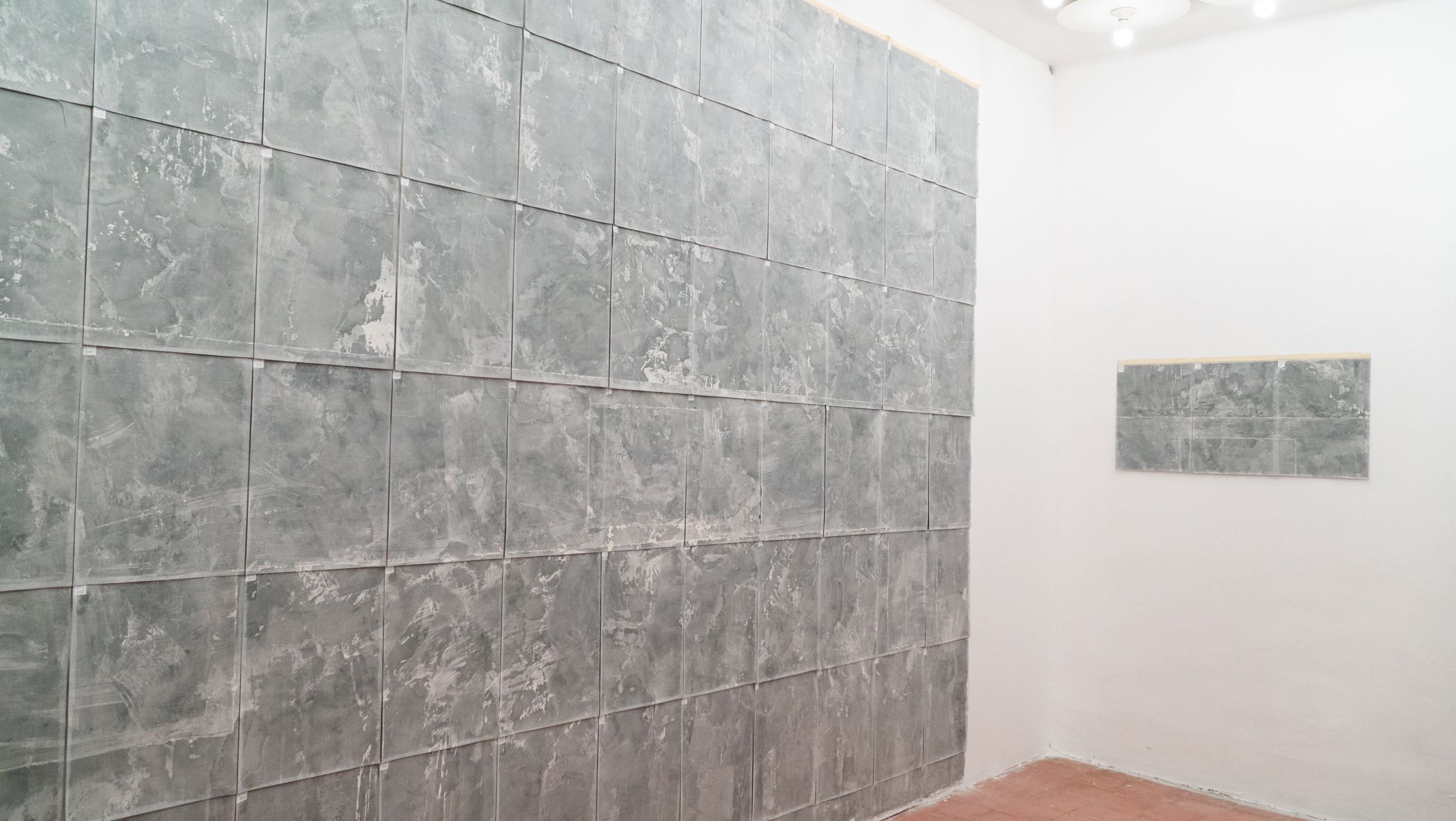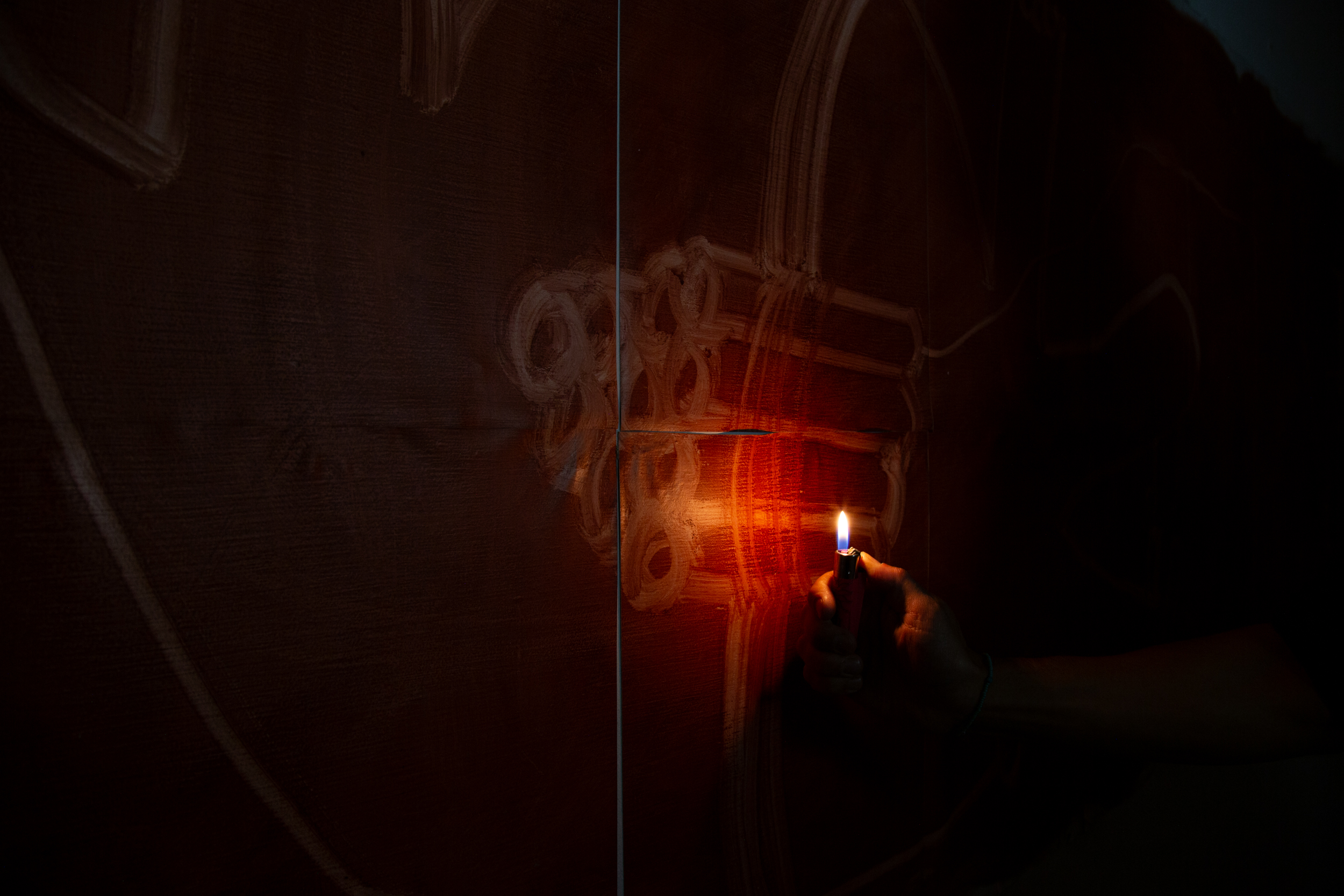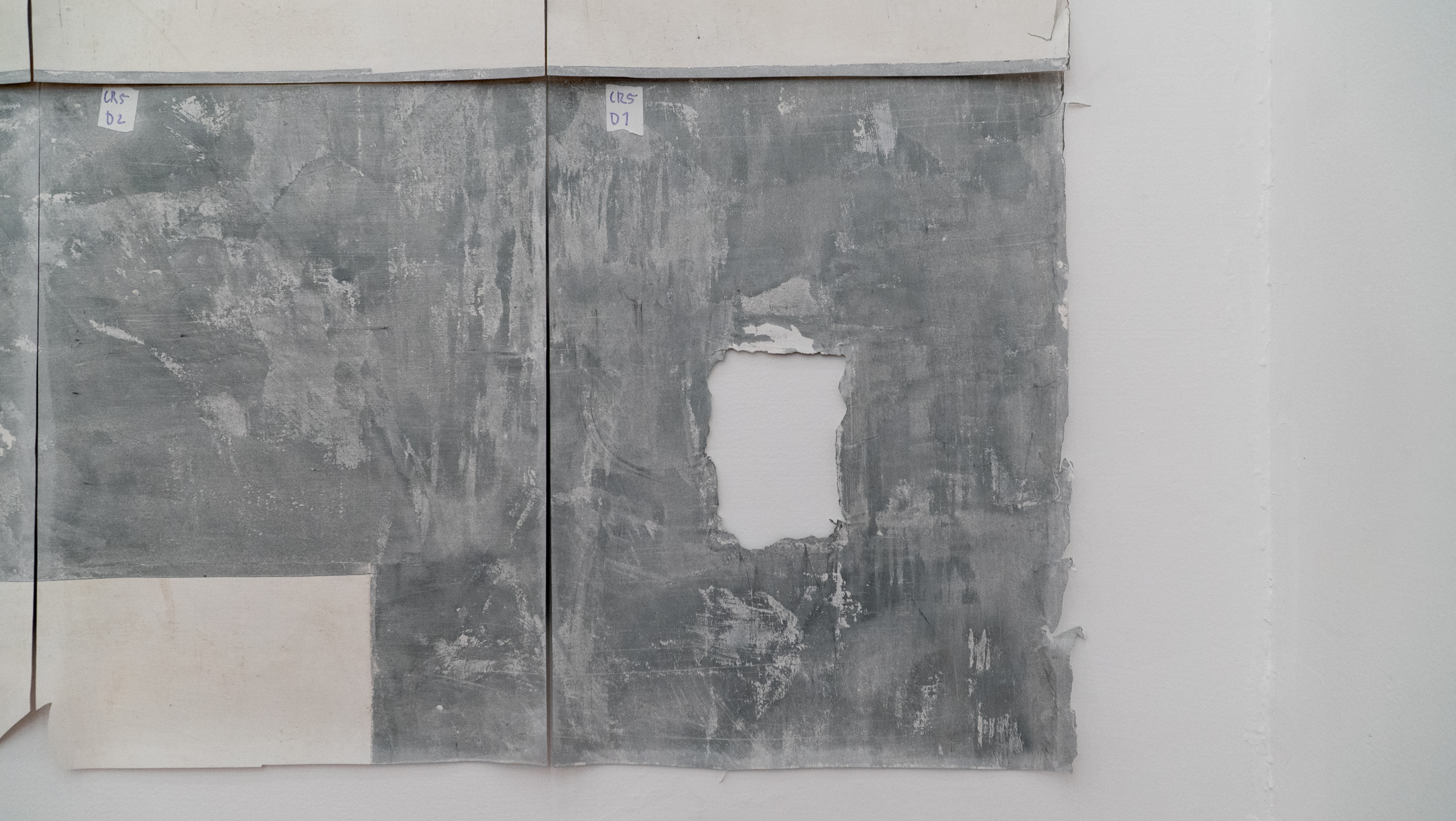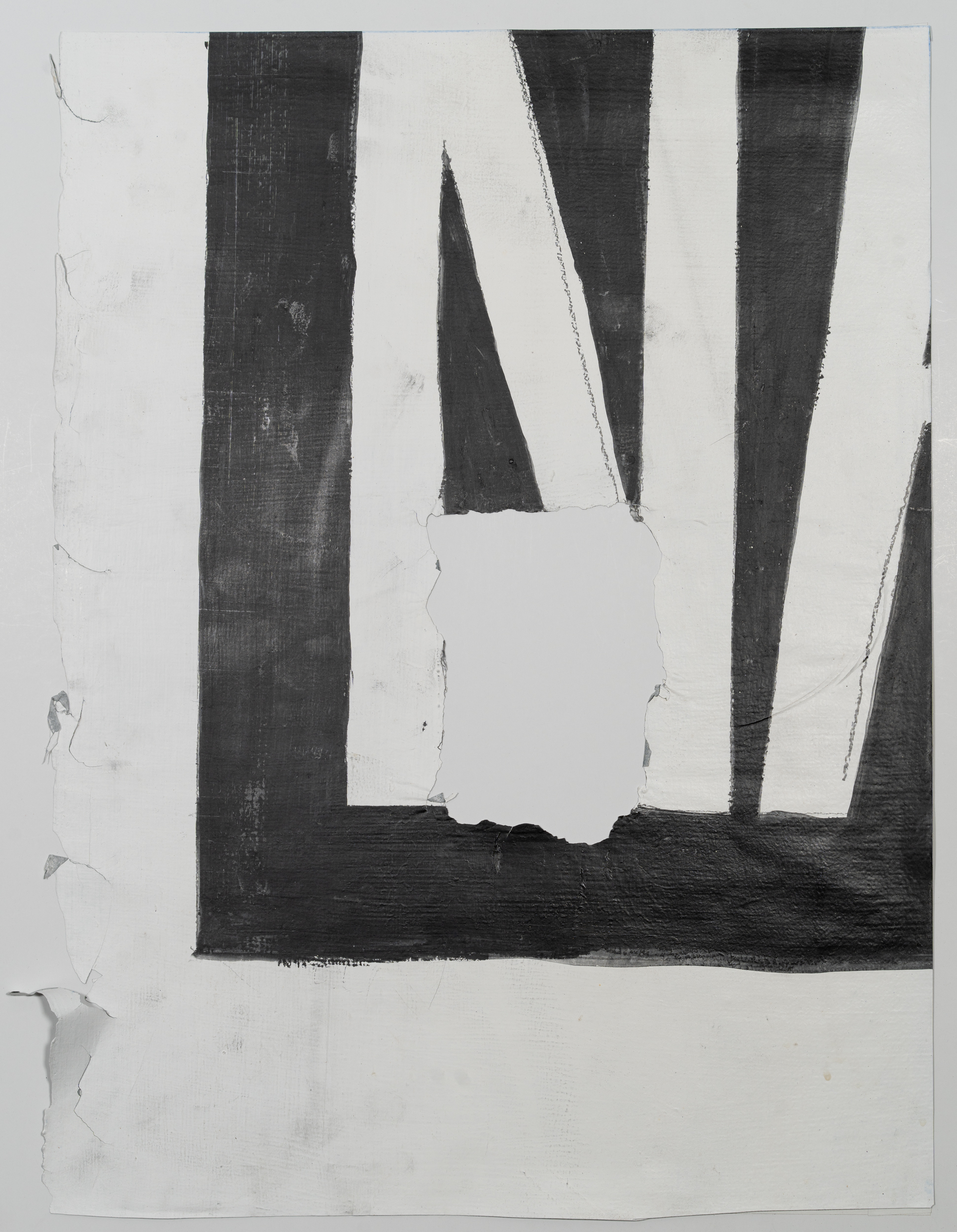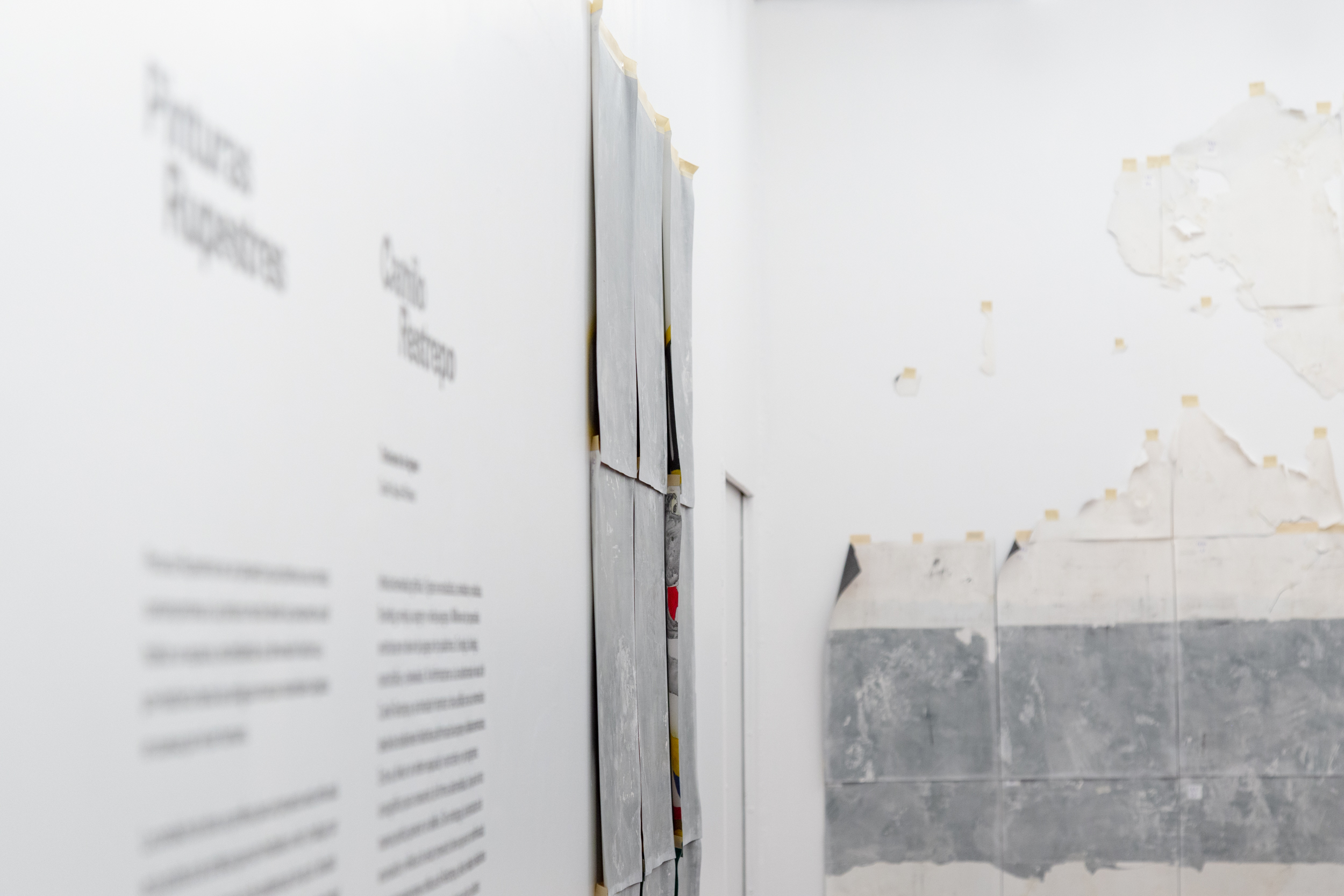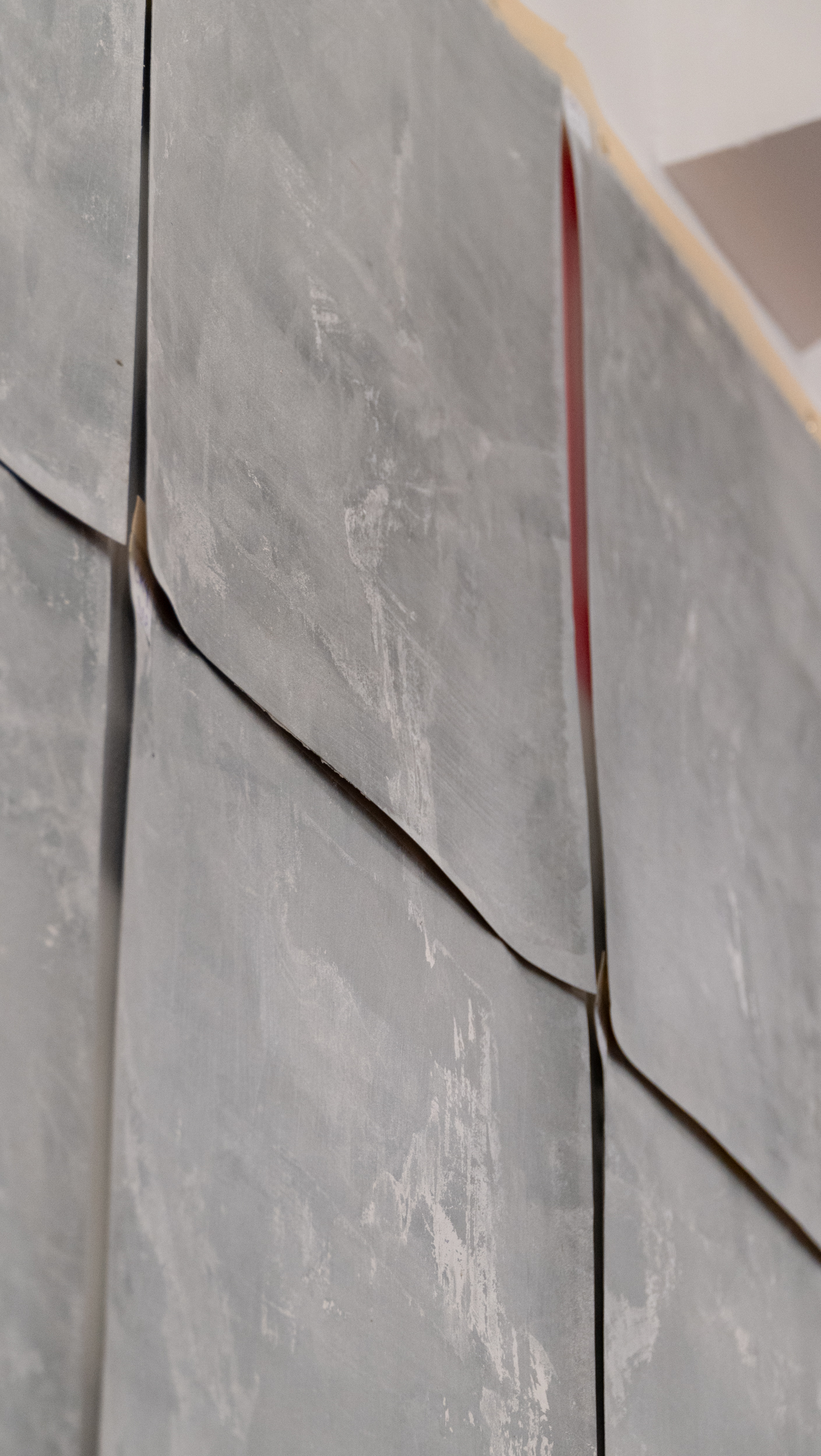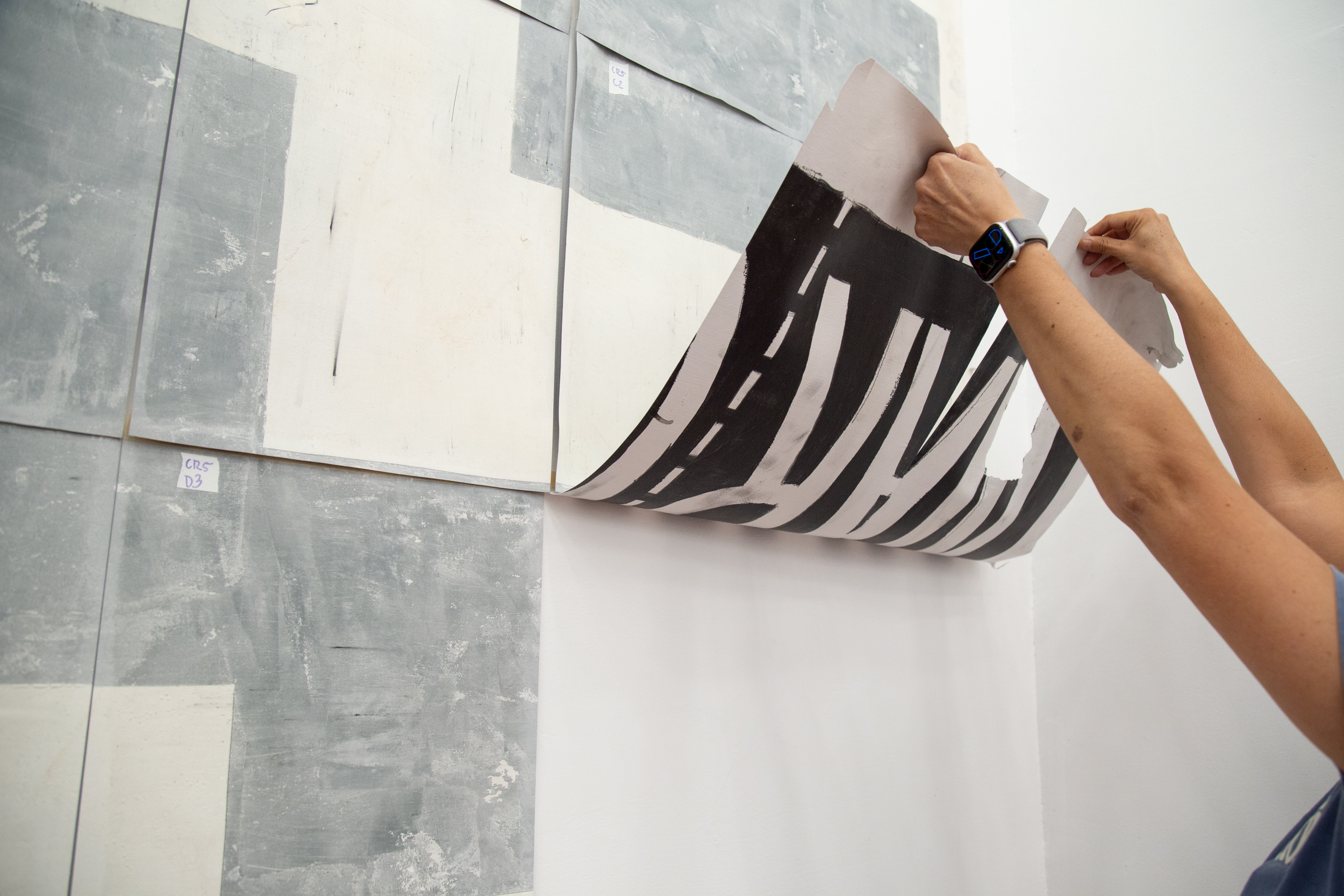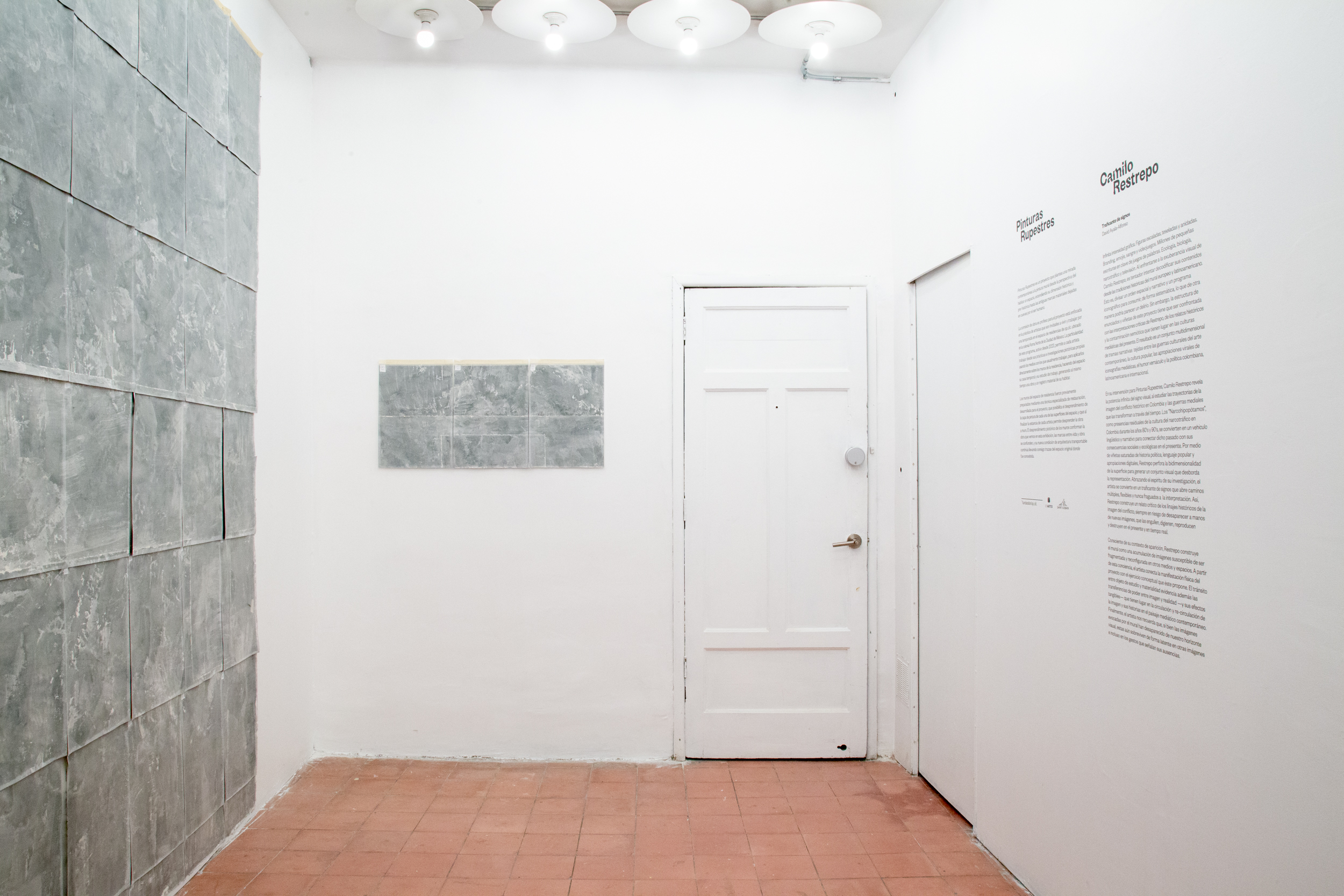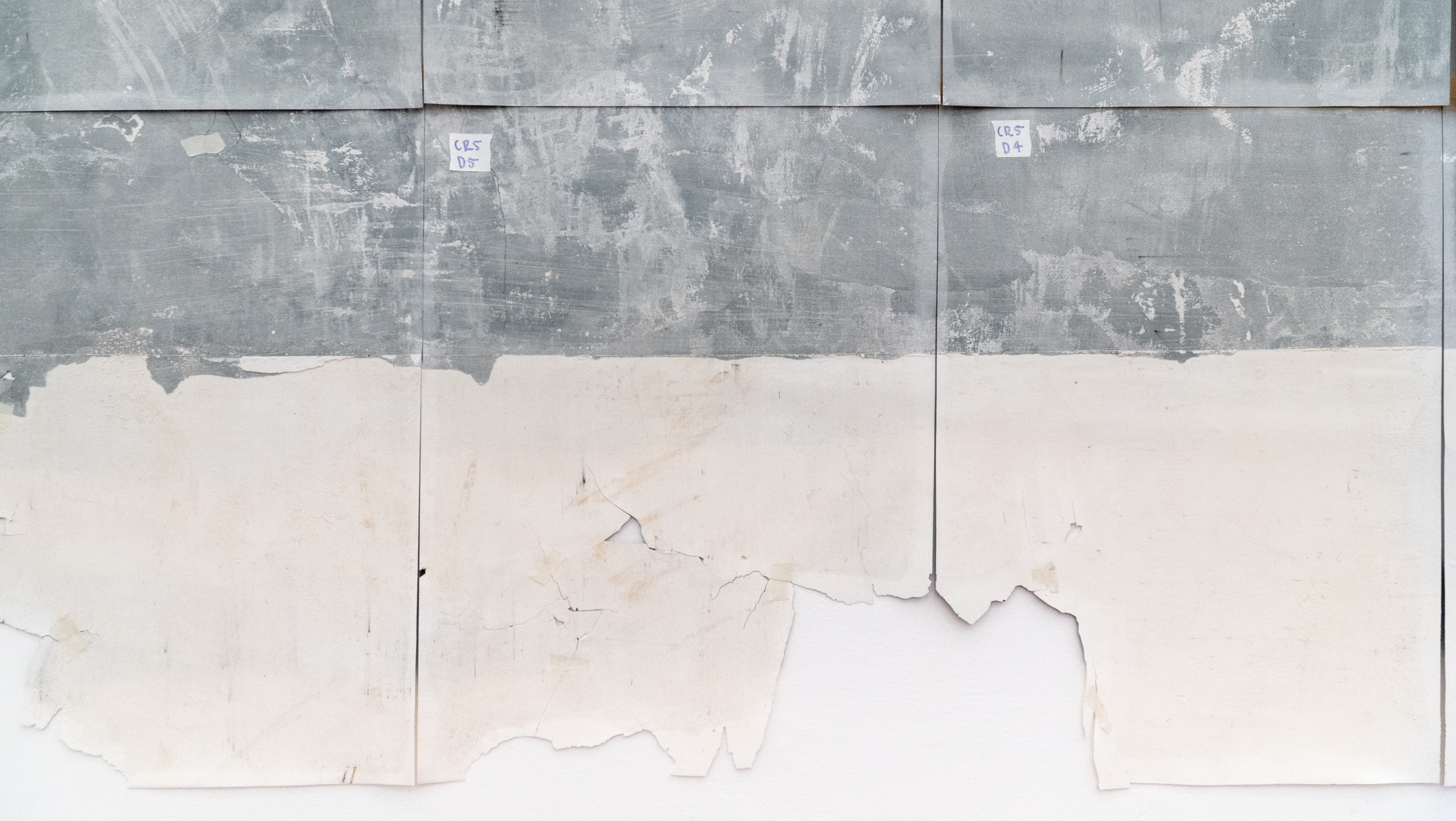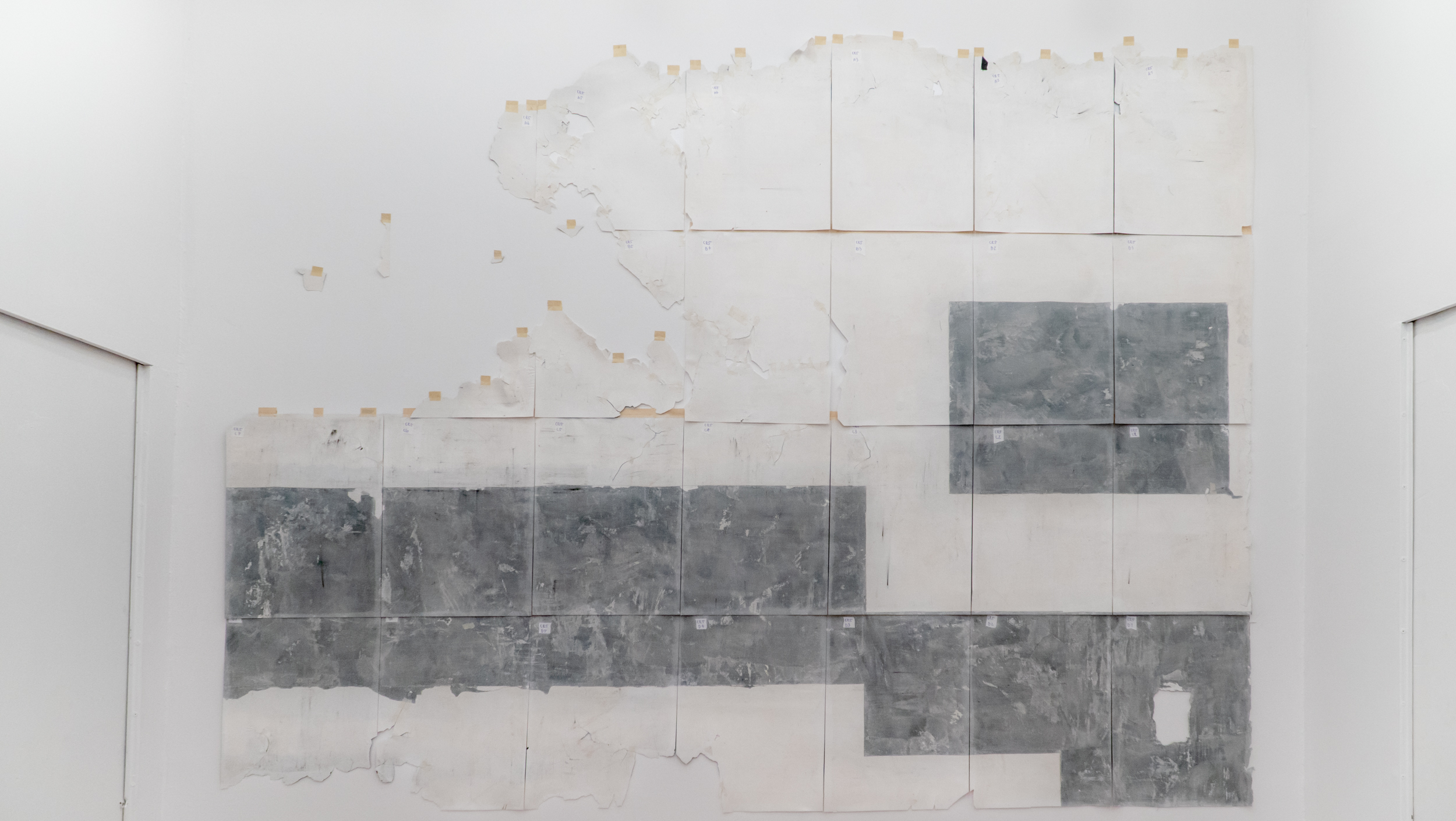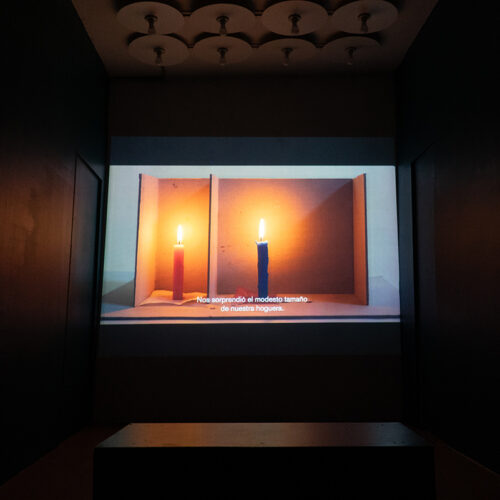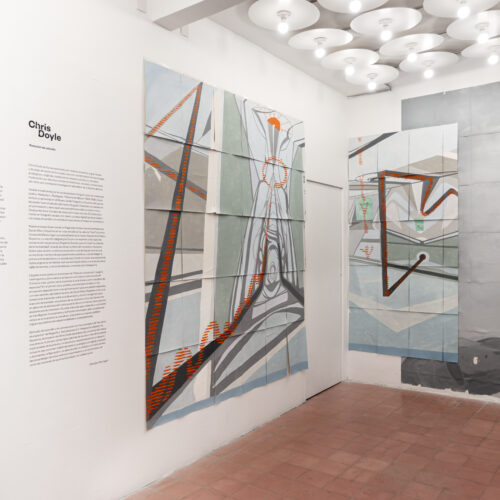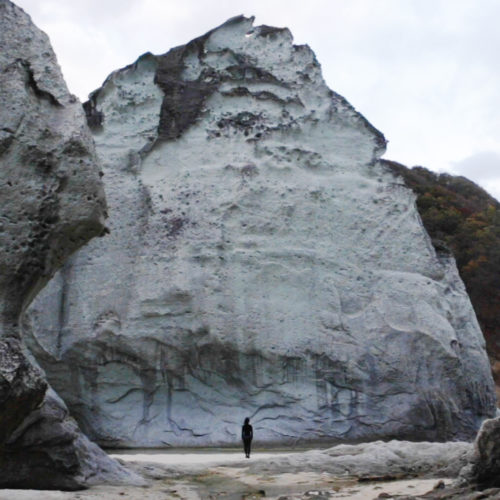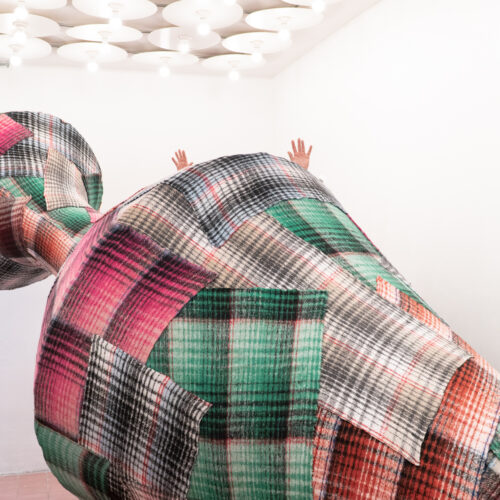Camilo Restrepo
Sign Trafficker
March 1st to April 5th, 2025
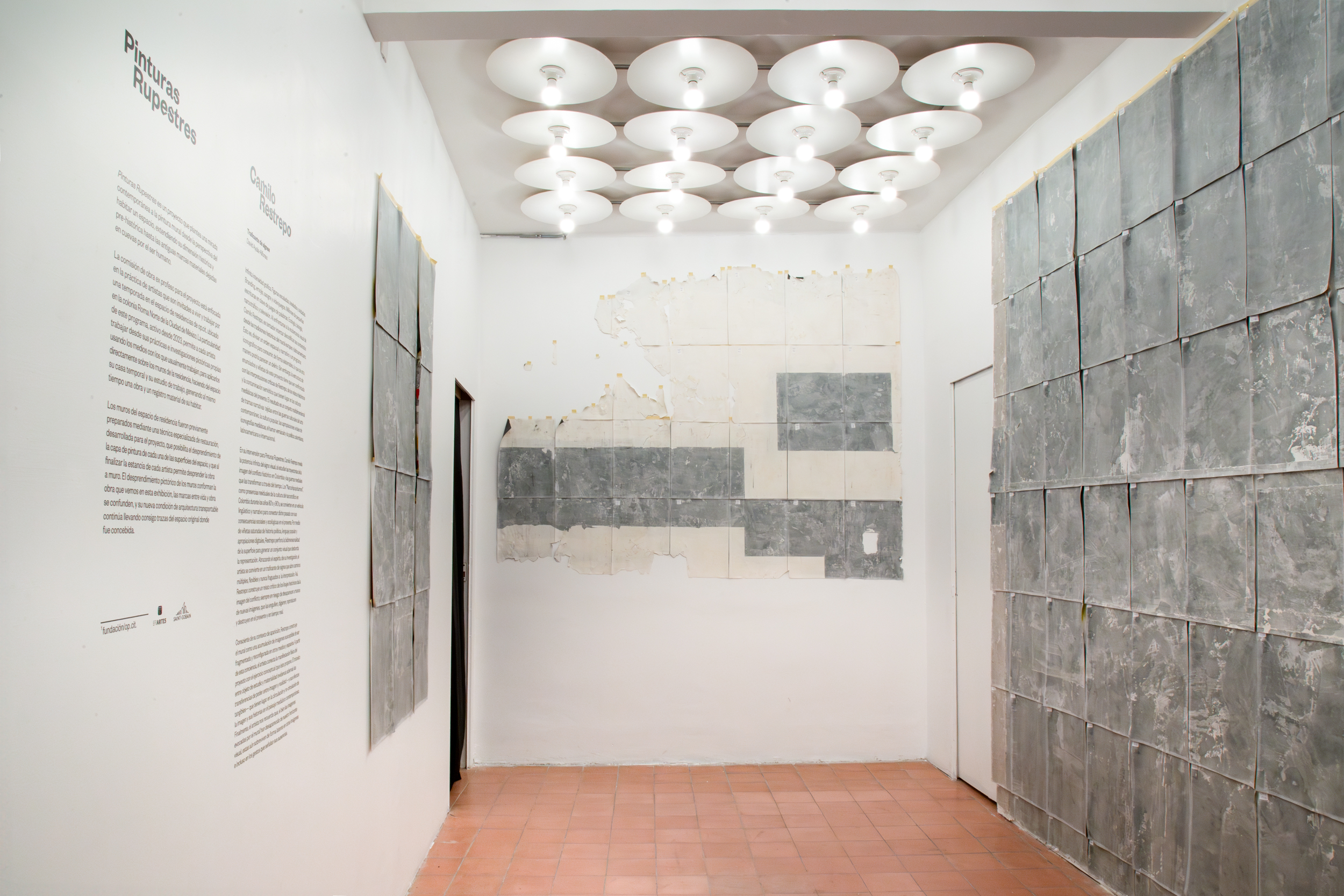
Text by David Ayala-Alfonso
Infinite graphic intensity. Scaled, tessellated, and nested figures. Branding, emojis, blood, and video games. Millions of miniature writings encoded in wordplay. Ecology, biology, drug trafficking, and television. When facing the visual exuberance of Camilo Restrepo, it is tempting to try decoding his content through the historical traditions of European and Latin American muralism. That is, to discern a spatial and narrative order and an iconographic program, to systematically consume what might otherwise seem like delirium. However, the structure of statements and vignettes in this project must be confronted with Restrepo’s critical interpretations, historical narratives, and the semiotic contamination in today’s media cultures. The result is a multidimensional set of narrative plots, woven between the culture wars of contemporary art, popular culture, the viral appropriation of media iconographies, vernacular humor, and Colombian, Latin American, and international politics.
In his intervention for Pinturas Rupestres, Camilo Restrepo reveals the infinite power of the visual sign by studying the trajectories of images in the historical conflict in Colombia and the media wars that transform those images over time. The “Narcohipopótamos” (Narco-Hippos), as residual presences of Colombia's drug trafficking culture during the 1980s and 1990s, become a linguistic and narrative vehicle to connect that past with its social and ecological consequences in the present. Through vignettes saturated with political history, popular language, and digital appropriations, Restrepo pierces the two-dimensionality of the surface to generate a visual ensemble that overflows representation. Embracing the spirit of his research, the artist becomes a trafficker of signs, opening multiple, flexible, and never fully fixed paths to interpretation. In this way, Restrepo constructs a critical account of the historical lineages of conflict imagery, always at risk of disappearing under the weight of new images that engulf, digest, reproduce, and destroy them in the present and in real time.
Aware of its context of appearance, Restrepo builds the mural as an accumulation of images susceptible to fragmentation and reconfiguration in other media and spaces. From this awareness, the artist connects the physical manifestation of the project with the conceptual exercise it proposes. The transit between object of study and materiality also highlights the power transfers between image and reality—and their tangible effects—that take place in the circulation and re-circulation of images and their stories in the contemporary media landscape. Finally, the artist reminds us that, although the images evoked by the mural have disappeared from our visual horizon, they still survive latently in other images and even in the gestures that point to their absences.
Camilo Restrepo (Medellín, 1973) is a visual artist that lives and works in Medellín, Colombia. He has had individual exhibitions in Colombia and in the United States, and has participated in group shows in Latin America, the United States and Europe. In 2010 he was selected as a Fulbright Scholar, and in 2011 he was nominated for the Luis Caballero Award, the most important award in Colombia for artists that are older than 35 years of age. In 2002 his book “La Foto de Identidad. fragments for a aesthetics” was published and in 2019 his first monograph entitled Alias was also oput of the presses. His work has been included in books such as Vitamin D3: Today’s Best in Contemporary Drawing by Phaidon Publishers. Since 2013 he is represented by Steve Turnes Gallery (Los Angeles, California) and since 2023 by La Cometa Gallery (Colombia). Restrepo is also the creator of the project a ToN oF coke — the first ton of cryptococaine available for sale on the blockchain— which has been censored on Twitter and Instagram and with which he has sought to expand the dialogue on the failure of the war on drugs.
Since 2013 he has been represented by Steve Turner Gallery (Los Angeles) and since 2023 by La Cometa Gallery (Bogotá, Medellín, Madrid and Miami). His work can be found in collections such as the Museo del Banco de la República in Colombia and the Museo Reina Sofía in Madrid.

